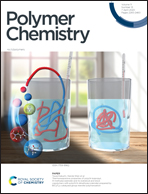Polydimethylsiloxane-based superhydrophobic membranes: fabrication, durability, repairability, and applications†
Abstract
A series of challenges, such as abrasion sensitivity and weak adhesion, has hindered the development of superhydrophobic materials for use in emerging fields. In this work, a roughness-regenerating superhydrophobic membrane with durability and repairability characteristics was synthesized via integrating vinyl-terminated polydimethylsiloxane (V-PDMS), vinyltriethoxysilane (VTES), and silica particles (SiO2). With the optimization of the textured material, double cross-linking networks and dual-scale rough structures were established in the polymer skeleton, endowing the superhydrophobic membrane with outstanding superhydrophobicity (CA: >164°; SA: <1°). Taking advantage of the bulk superhydrophobicity and roughness-regenerating characteristics, the superhydrophobic membrane demonstrated mechanical durability during multi-cycle sandpaper abrasion (>75 cycles). More importantly, the roughness-regenerating characteristics enabled the special wettability of the damaged superhydrophobic membrane to be repaired via sanding treatment without the utilization of healing agents (>15 cycles). Interestingly, based on the underwater light-reflection of the superhydrophobic material, underwater pattern display was successfully realized on the superhydrophobic membrane, which may broaden its fields of application. Our findings certainly introduce a facile method to fabricate advanced superhydrophobic materials for use in emerging fields.



 Please wait while we load your content...
Please wait while we load your content...